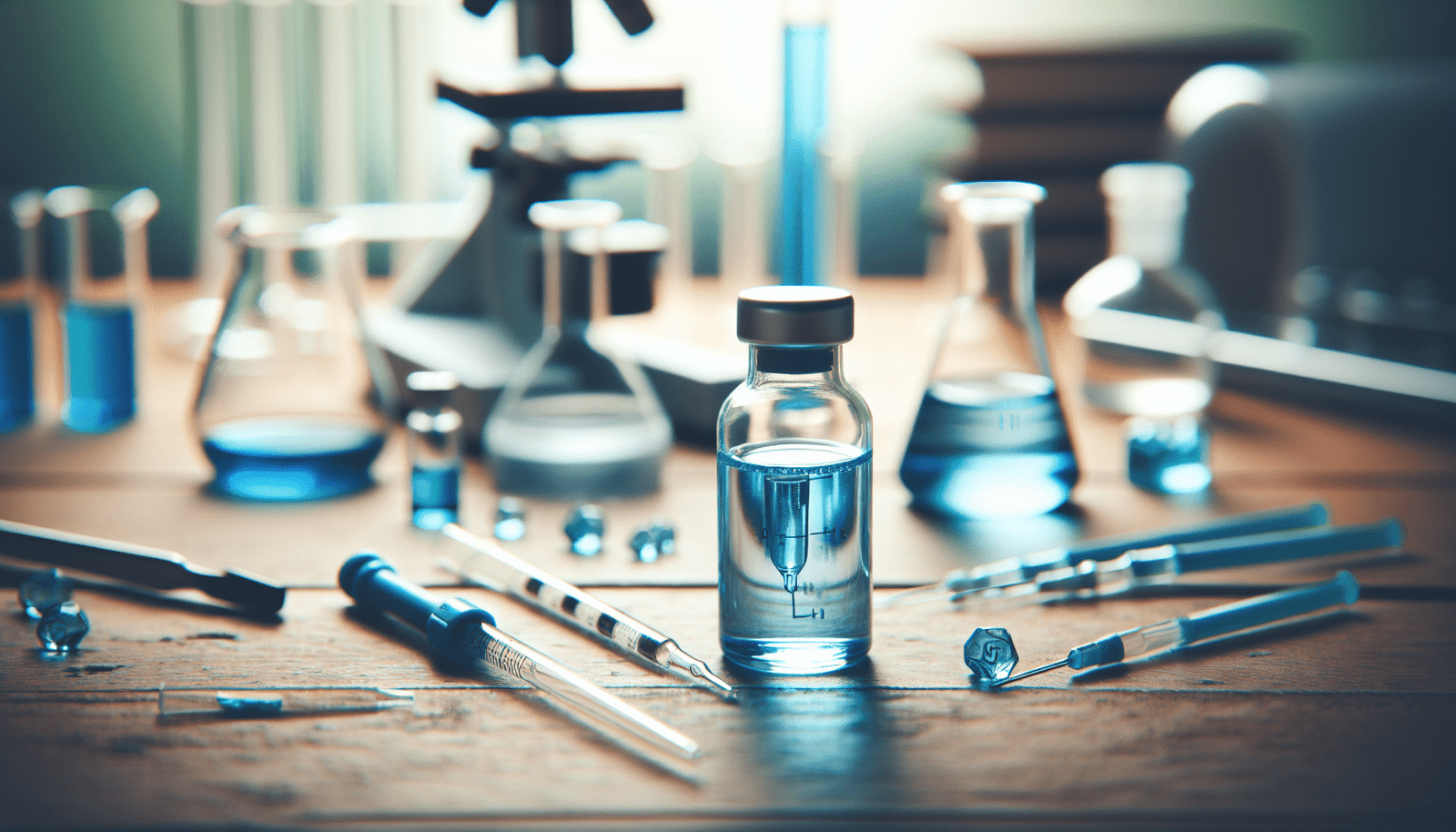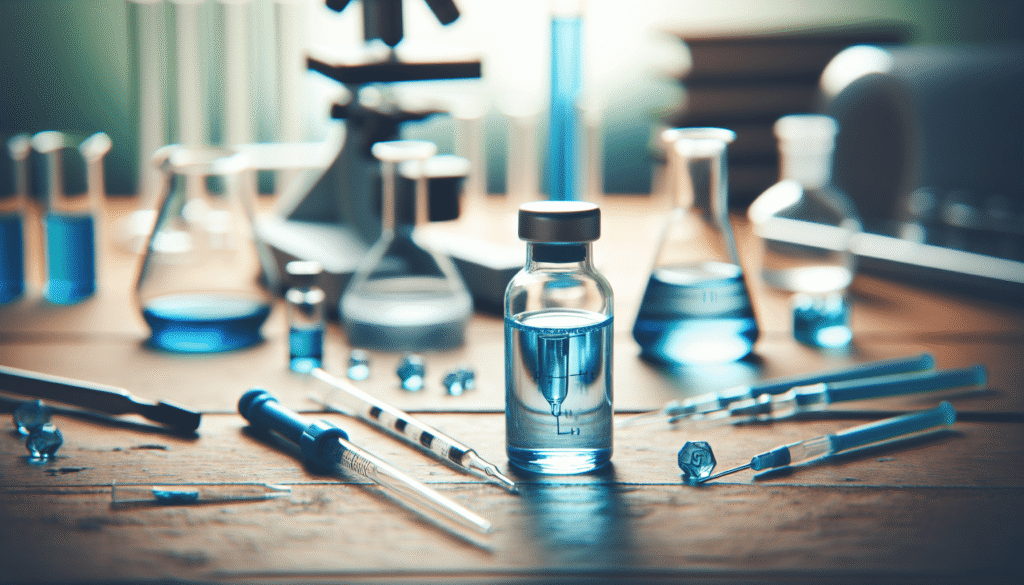
What do you know about methylene blue solutions? If you’re like many people who come across this chemical, you may find yourself intrigued by its diverse applications in various fields, ranging from medicine to environmental science. This guide will take you through the fundamentals of methylene blue, ensuring you understand its uses, properties, potential benefits, and safety precautions.

Understanding Methylene Blue
Methylene blue is a synthetic dye that has garnered attention for its myriad of uses. Originally developed in the 19th century, it was first used as a textile dye. However, over time, its utility in scientific and medical applications became evident.
Chemical Properties of Methylene Blue
Methylene blue, chemically known as thionine, has a distinct blue coloration due to its chemical structure. The compound has the formula C16H18ClN3S and exhibits characteristics akin to that of a phenothiazine dye.
- Solubility: It is highly soluble in water, which makes it applicable in various aqueous solutions.
- Stability: Generally stable under neutral pH, it can decompose when exposed to extreme conditions like high temperatures or strong acids.
Understanding these properties is essential for anyone looking to utilize methylene blue in practical applications, as they directly influence its effectiveness and safety.
Uses of Methylene Blue
Methylene blue has a wide range of applications across fields such as biology, medicine, and environmental science. Grasping these uses will give you insight into why this chemical remains relevant even after over a century since its inception.
Medical Applications
In medicine, methylene blue has been used for:
- Dyeing tissues: Its ability to stain biological tissues facilitates identification and examination during surgeries.
- Antimalarial treatment: Methylene blue serves as a treatment for malaria, particularly in cases where patients exhibit resistance to other medications.
- Methemoglobinemia: This condition occurs when hemoglobin is transformed into methemoglobin, which cannot carry oxygen. Methylene blue can reverse this condition by converting it back to its original form.
Biological Research
In research, you might encounter methylene blue as a:
- Staining agent: It is instrumental in microscopy, where it stains cells and tissues, making it easier to observe cellular structures.
- Redox indicator: Researchers often leverage it as a redox indicator in various experiments due to its distinctive color change at different oxidation states.
Environmental Science
In environmental applications, methylene blue functions as:
- Water quality indicator: Its solubility and color changes can indicate the presence of contaminants in water samples.
- Photodynamic therapy: This is an emerging treatment where methylene blue may become pivotal in treating pollutants through light-activated reactions.
Understanding these applications not only highlights the versatility of methylene blue but also paves the way for your knowledge of practical usage.
Preparing Methylene Blue Solutions
If you plan to work with methylene blue, it is crucial to know how to prepare solutions effectively. The concentration of the solution will depend on its intended use.
Necessary Materials
Before you begin, ensure you have the following materials:
- Methylene blue powder or solution
- Distilled water
- A graduated cylinder or volumetric flask
- Stirring rod or magnetic stirrer
- Personal protective equipment (PPE): gloves, lab coat, and goggles
Steps to Prepare a Methylene Blue Solution
-
Decide on Concentration: Determine the concentration required for your application. Common concentrations range from 0.1% to 1%.
-
Weigh the Chemical: Measure the appropriate amount of methylene blue powder. For a 0.1% solution prepared in 100 mL of water, this would require 0.1 grams of the powder.
-
Dissolve the Powder: Add the measured methylene blue powder to a graduated cylinder that contains a portion of distilled water.
-
Mix Thoroughly: Stir the mixture until the powder is completely dissolved. Add water until you reach the final volume.
-
Storage and Labeling: Transfer the solution into an appropriate storage container, label it clearly with concentration, date, and your initials, and store it in a cool, dark place.
Following these steps ensures that your methylene blue solution is accurately prepared and ready for use in various applications.
Safety Precautions
While methylene blue is useful, it is vital to approach it with the necessary safety precautions.
Potential Risks
-
Skin and Eye Irritation: Methylene blue can cause irritation upon contact. Always use protective gear.
-
Inhalation Risks: Inhalation of its dust can lead to respiratory issues. Utilize fume hoods or masks if working with powder forms.
-
Environmental Hazards: When disposed of, methylene blue can pose risks to aquatic life. Follow local regulations regarding disposal.
Recommended Safety Measures
-
Use of Personal Protective Equipment (PPE): Always wear gloves, goggles, and lab coats to minimize exposure.
-
Work in a Well-Ventilated Area: Ensure that your workspace is well-aerated. If using the powder form, consider working in a fume hood.
-
Proper Labeling and Storage: Keep all solutions clearly labeled and stored away from incompatible substances.
-
First Aid Procedures: Have an emergency action plan in place in case of accidental exposure, including an eye wash station and safety shower.
Implementing these safety measures will help mitigate risks associated with methylene blue, making it safer for you and your work environment.
Methylene Blue in Experimental Procedures
Understanding how methylene blue is utilized in experiments will deepen your knowledge about this chemical and its role in research settings.
Staining Protocols
In biological research, methylene blue serves as an effective stain for various cellular components. Here’s a basic protocol:
-
Cell Preparation: Prepare a sample containing the cells you wish to stain. This could be tissue sections or cultured cells.
-
Application of Methylene Blue: Apply a few drops of methylene blue solution onto the sample, ensuring full coverage.
-
Incubation: Allow the sample to incubate for a prescribed duration (typically 5-15 minutes, depending on the protocol).
-
Washing: Rinse the sample gently with distilled water to remove excess dye.
-
Observation: View the stained sample under a microscope. The methylene blue will enhance cellular details, providing clear visibility of structures.
Redox Reaction Experiments
Methylene blue’s properties as a redox indicator are particularly useful in chemistry experiments.
-
Preparing the Reaction Mixture: Combine a known reducing agent with the methylene blue solution in a beaker.
-
Monitoring Color Change: As the reaction proceeds, you will observe a change in color from blue to colorless or a lighter hue—indicating the reduction of methylene blue.
-
Documentation: Record the time taken for the color change and any observations about the reaction. This data can help infer reaction rates and mechanisms.
These protocols provide solid foundations for effectively utilizing methylene blue in experimental settings.

Methylene Blue and Self-Medication
Certain anecdotal claims regarding the benefits of methylene blue for self-medication have surfaced over the years. However, it is critical to approach this topic with caution.
Claims of Health Benefits
Some proponents argue that methylene blue may have potential benefits for:
-
Cognitive Function: It is believed to enhance mitochondrial function, thereby improving cognitive performance.
-
Antioxidant Properties: Some studies suggest that methylene blue might act as an antioxidant, helping to protect cells from oxidative stress.
Importance of Medical Guidance
Before considering self-medication with methylene blue, always consult a healthcare professional. The following points are essential:
-
Dosage Sensitivity: Determining the appropriate dosage is crucial. Self-medicating can result in adverse effects if done incorrectly.
-
Interactions with Other Medications: Methylene blue can interact with certain medications, leading to serious health complications.
-
Regulatory Status: In many countries, methylene blue may not be approved for use outside specific medical settings. Always verify local regulations.
Approaching self-medication with informed caution ensures your safety and well-being.
Conclusion
Understanding methylene blue solutions goes beyond mere composition. Its diverse applications, ranging from medical to environmental uses, illustrate its versatility.
Key Takeaways
- Methylene blue is a synthetic dye with applications in medicine, research, and environmental science.
- Proper preparation and safety measures are paramount for anyone working with methylene blue solutions.
- Always consult with healthcare professionals before considering self-medication involving methylene blue.
As you continue to learn about methylene blue, prioritize safety, knowledge, and clarity. This approach will not only enhance your understanding but also promote effective and responsible use of this fascinating compound in your work and research.